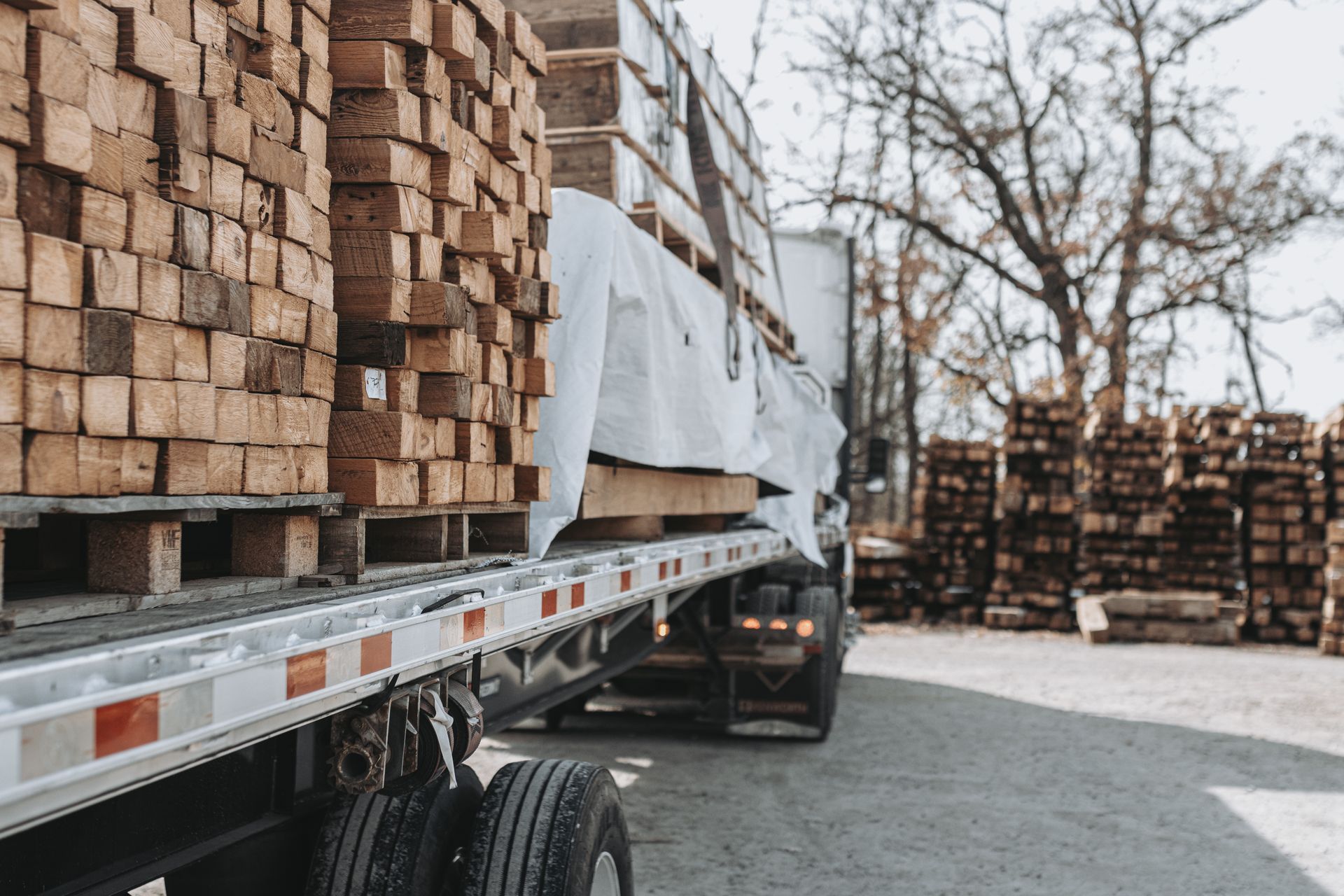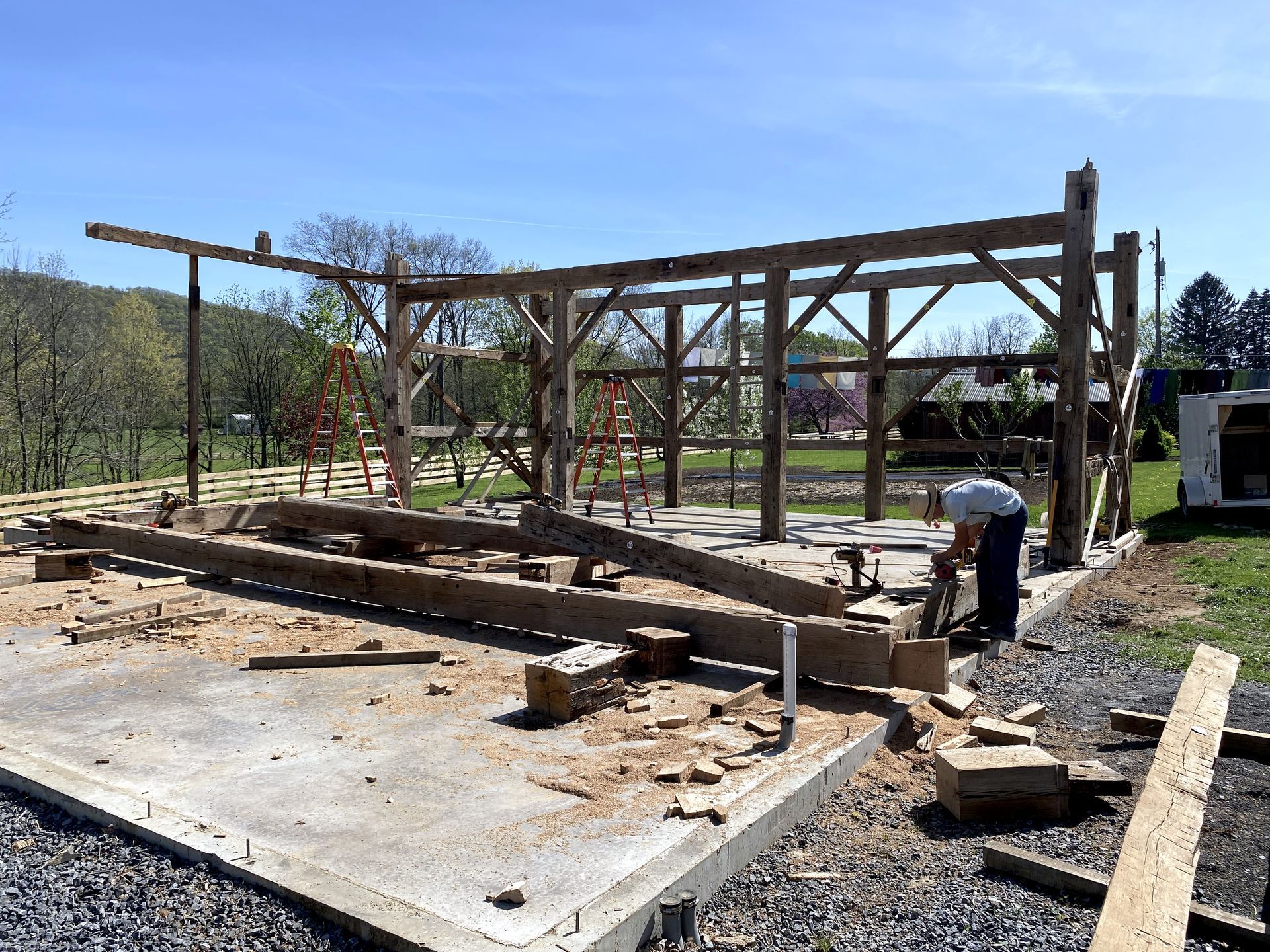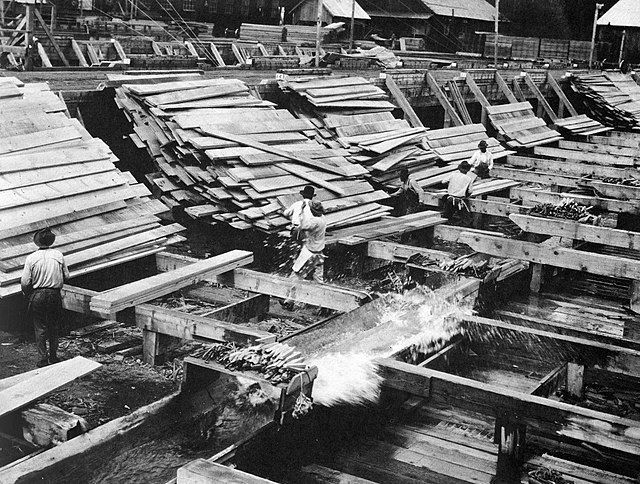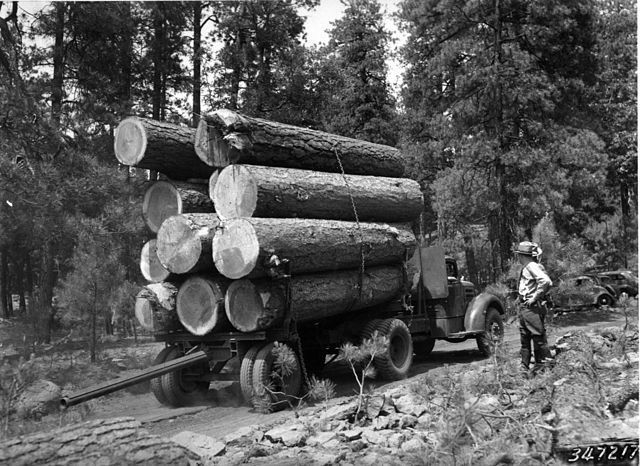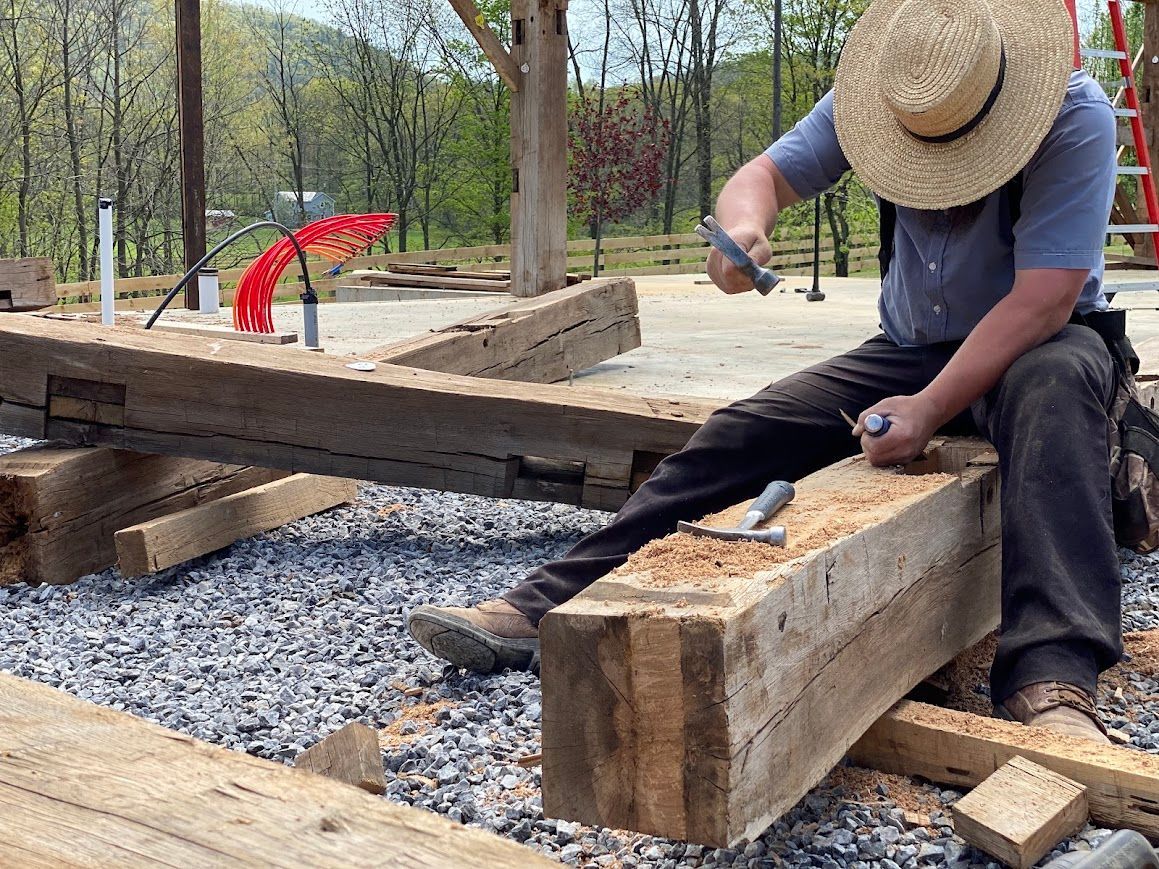Flat Grain vs. Vertical Grain Lumber
Key Differences and Best Applications
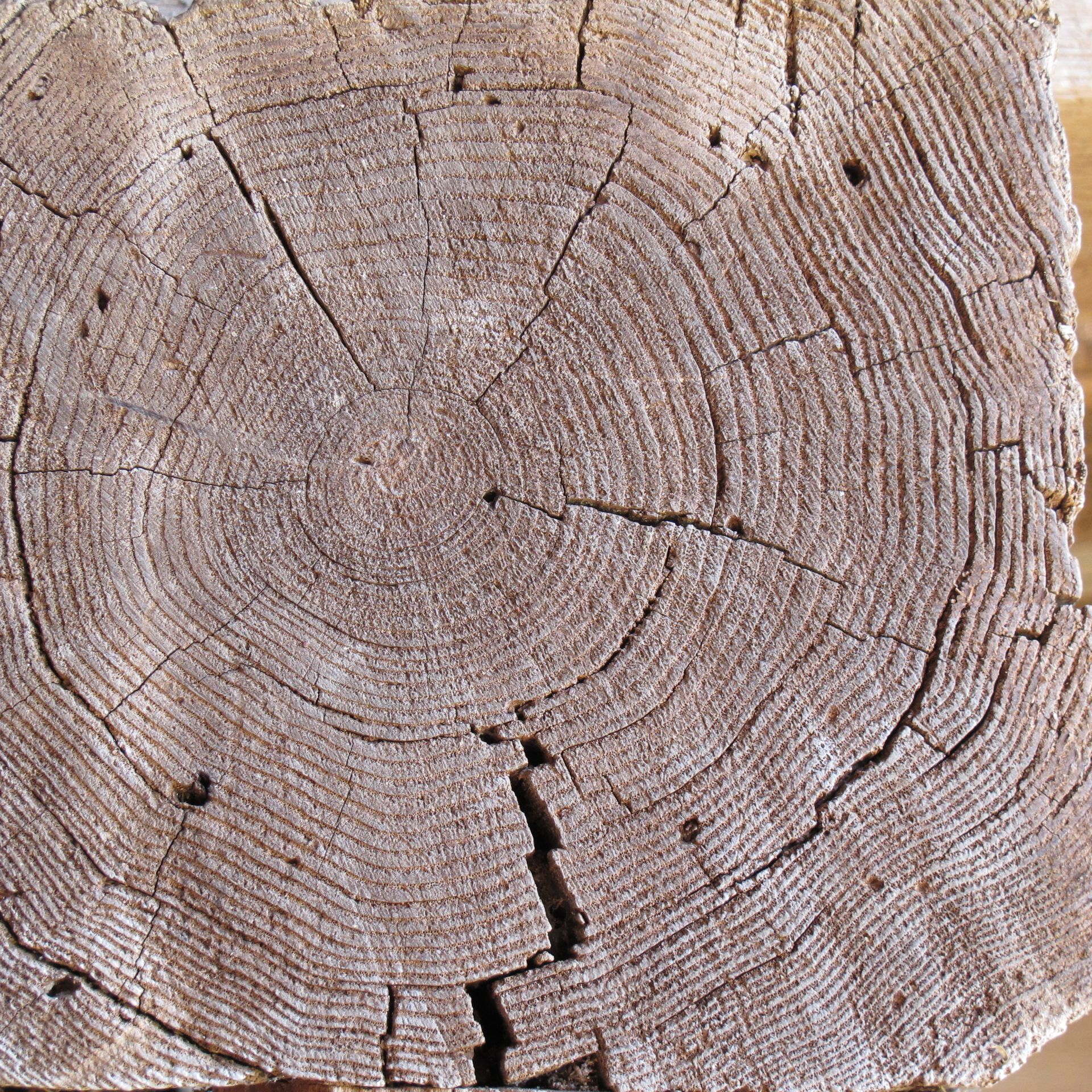
Walk into any lumberyard, and you’ll see it immediately, boards with wildly different grain patterns. Some show wide, sweeping curves. Others have straight, tight lines that run neatly across the surface. These aren’t just artistic features; they represent the two main ways wood can be cut from a log, and they dramatically affect strength, stability, and how the wood looks.
Whether you’re crafting furniture, building a home, or restoring a historic structure, knowing the difference between flat grain and vertical grain lumber can make or break your project.
What’s the Difference?
The distinction between flat grain and vertical grain lumber comes down to one thing: how the boards are cut from the log. This one detail changes how they look, how strong they are, and how well they hold up over time.
Flat Grain Lumber
Also called plain sawn, flat grain lumber is created when the wood is cut along the growth rings of the tree. This method gives it its signature wavy or “cathedral”-shaped grain patterns.
- Look: Wide, curved grain patterns, often bold and eye-catching.
- Production: This is the most efficient and economical way to cut a log. It minimizes waste and maximizes the number of boards produced, which is why it’s so common.
- Strength and Stability: Flat grain lumber tends to move more with changes in humidity, making it more prone to warping and twisting.
Vertical Grain Lumber
Also known as quarter sawn, vertical grain boards are cut perpendicular to the tree's growth rings. This gives the surface a straight, parallel grain.
- Look: Simple, straight lines for a clean, consistent appearance.
- Production: Cutting wood this way produces less usable lumber from a log and requires more work, so vertical grain boards are typically more expensive.
- Strength and Stability: Vertical grain is less likely to warp or swell over time because of its stable structure. It’s ideal for projects requiring precision and durability.
What’s the Best Option for Your Project?
Choosing between flat grain and vertical grain depends on what you’re building and what you value most. Here’s a breakdown:
When to Choose Flat Grain
Flat grain is a great choice when you need something cost-effective or visually striking.
- Projects with Bold Aesthetics: Its dramatic grain patterns make it a favorite for rustic furniture or standout design features.
- Economy Matters: Because it’s easier and faster to produce, flat grain lumber is less expensive, making it perfect for large projects like framing or paneling.
- Flexible Applications: It works well for non-precision projects where some movement over time won’t be a problem.
When to Choose Vertical Grain
Vertical grain lumber shines in projects where stability and consistency are key.
- Exterior Siding and Trim: Its resistance to warping and swelling makes it ideal for areas exposed to the elements.
- Flooring: For surfaces that must stay flat and even, vertical grain is an excellent choice.
- Fine Furniture and Cabinetry: If you’re crafting something that requires precision, like cabinets or tables, the stability of vertical grain is hard to beat.
How Each Performs in the Real World
Stability
Wood tends to expand and contract with changes in humidity. Vertical grain lumber, with its tight, straight lines, moves much less, staying stable over time. On the other hand, flat grain boards are more likely to swell or shrink across their width.
Warping and Splitting
Vertical grain is naturally better at resisting warping like cupping or twisting. Its consistent grain structure also helps reduce surface checking (tiny cracks on the surface). Flat grain boards, while strong, are more prone to these issues under shifting moisture levels.
Appearance
Flat grain boards show off dramatic and unique patterns, great for creative, rustic, or traditional designs. Vertical grain, with its clean and uniform lines, works well in minimalist or professional looks that require a consistent style.
Popular Wood Types
The type of wood you choose impacts how the grain looks and performs.
- Douglas Fir: Vertical grain is highly prized for its stability and straight lines, especially for finish work.
- Oak: Vertical grain highlights the wood’s ray structure, creating a stunning “ray fleck” pattern that many love.
- Cedar: Western red cedar vertical grain performs better outdoors but doesn’t differ much in appearance from its flat grain counterpart.
Final Thoughts
Choosing between flat grain and vertical grain lumber isn’t just about visual preference. It’s about what will perform better for the job. Here are some key takeaways to help you decide:
- Flat grain lumber is economical and visually bold but requires more care with changes in moisture.
- Vertical grain lumber costs more but offers unbeatable stability and consistency, perfect for demanding projects.
Whether you’re tackling a weekend DIY or planning a professional build, understanding the differences between these grain types ensures you pick the right material for the job.
Explore our services at Bay & Bent, and elevate your next woodworking project with our commitment to quality materials and craftsmanship!


